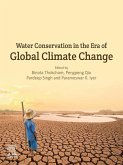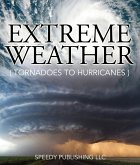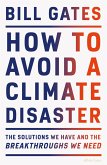Agriculture generates over $2.5 trillion annually for the global economy.
Each year, global agricultural efforts are beset by tens of billions of dollars in damage from hail storms.
Each year, insurance companies pay out vast sums of money to indemnify farm operators who have purchased crop hail insurance.
Frozen Fury was written to help readers more thoroughly understand climate change, the science of hail storms, and how climate change is increasing the propensity for more severe weather events including hail storms. This book is also intended to increase the reader's understanding of the history of various agricultural crops, the stages of crop growth, and the effects of hail at various stages of crop growth.
Frozen Fury is an excellent resource for farm operators, agricultural students, and hail adjustors.
What is included?
This book begins with a unique look at Weather and Climate Change. This is followed by a discussion of cloud formation, the WBF Model and the Ludlum Model of hail formation. The question of whether hail storms can be suppressed is then examined with a focus on early efforts by General Electric in the 1940s, Russian efforts in the 1950s, and later efforts in North Dakota, Mendoza, Argentina, and Calgary, Canada.
The book then delves into seed structure, plant growth stages, and the photosynthesis process.
Next, it explores hail insurance and how the hail insurance industry awards damages in accordance with the stage of plant growth at which a hail storm occurred. A review of past academic studies involving real and simulated hailstorms is presented to show the reader how an insurance company will structure its payouts to a policy holder.
Lastly, a hail insurance policy holder must provide an accurate land description to the insurance company so an adjustor can navigate to the land parcel in question. The final chapters in this book include a brief history of land description systems, an explanation of GPS navigation technology and a look at how drone technology might one day be used to perform insurance adjusting on hail affected crops.
Malcolm Bucholtz, B.Sc., MBA, M.Sc. resides in the small farming community of Mossbank, Saskatchewan, Canada.
Each year, global agricultural efforts are beset by tens of billions of dollars in damage from hail storms.
Each year, insurance companies pay out vast sums of money to indemnify farm operators who have purchased crop hail insurance.
Frozen Fury was written to help readers more thoroughly understand climate change, the science of hail storms, and how climate change is increasing the propensity for more severe weather events including hail storms. This book is also intended to increase the reader's understanding of the history of various agricultural crops, the stages of crop growth, and the effects of hail at various stages of crop growth.
Frozen Fury is an excellent resource for farm operators, agricultural students, and hail adjustors.
What is included?
This book begins with a unique look at Weather and Climate Change. This is followed by a discussion of cloud formation, the WBF Model and the Ludlum Model of hail formation. The question of whether hail storms can be suppressed is then examined with a focus on early efforts by General Electric in the 1940s, Russian efforts in the 1950s, and later efforts in North Dakota, Mendoza, Argentina, and Calgary, Canada.
The book then delves into seed structure, plant growth stages, and the photosynthesis process.
Next, it explores hail insurance and how the hail insurance industry awards damages in accordance with the stage of plant growth at which a hail storm occurred. A review of past academic studies involving real and simulated hailstorms is presented to show the reader how an insurance company will structure its payouts to a policy holder.
Lastly, a hail insurance policy holder must provide an accurate land description to the insurance company so an adjustor can navigate to the land parcel in question. The final chapters in this book include a brief history of land description systems, an explanation of GPS navigation technology and a look at how drone technology might one day be used to perform insurance adjusting on hail affected crops.
Malcolm Bucholtz, B.Sc., MBA, M.Sc. resides in the small farming community of Mossbank, Saskatchewan, Canada.
Dieser Download kann aus rechtlichen Gründen nur mit Rechnungsadresse in A, D ausgeliefert werden.









